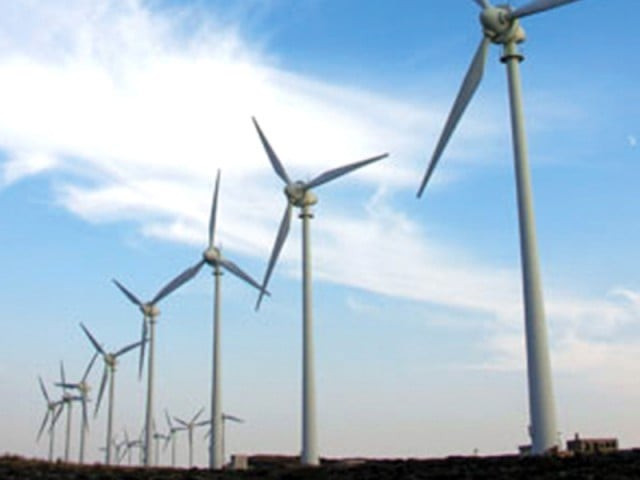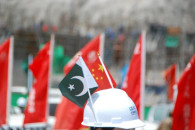Project achieves financial close with govt guarantee
Gul Ahmed’s wind power project will cost $131m, come on stream in late 2016.

The project is expected to come on stream in late 2016 and will supply environment-friendly electricity to the national grid.
Gul Ahmed Wind Power Executive Director Danish Iqbal and AEDB Chief Executive Officer Asjad Imtiaz Ali inked the agreement at the AEDB office here on Friday.
The wind power project, located at Jhimpir, Thatta district, is being co-developed by Infraco Asia Development, a donor-funded infrastructure development company of Singapore, and the International Finance Corporation (IFC), which is part of the World Bank Group and is also taking a minority interest in the project.
The project will cost $131 million and its debt is financed by the IFC, Proparco (France), FMO (the Netherlands), United Bank, National Bank of Pakistan and Bank Alfalah. It is expected to come on stream in late 2016 and will supply environment-friendly electricity to the national grid.
“We are determined to make positive contribution to developing the renewable energy sector,” said Iqbal Alimohamed, CEO of Gul Ahmed Wind Power, in a statement.
This is the group’s second wind power project that has achieved financial close this year.
Speaking on the occasion, Gul Ahmed Wind Power Executive Director Danish Iqbal said more wind power projects would follow, which would provide the country with cheaper clean energy and help tackle the energy shortage. “We have arranged all required funds to start work on the project.”
AEDB CEO Asjad Imtiaz pointed out that the project sponsor had committed to providing financing and the project would be completed in 18 months.
The regulator has set the upfront tariff at 13.52 cents per unit, but it will be gradually reduced to 4 to 5 cents per unit after first 10 years of operations.
“We have signed agreements for wind power in recent days that will add 300MW to the national grid,” Imtiaz said, adding these projects would attract an investment of $800 million.
He said the government was focusing on utilising domestic wind, solar and hydroelectric power resources in an effort to produce clean energy. “There is no capacity payment clause in wind power projects and consumers will pay for the electricity produced.”
He stressed that Pakistan had the potential to generate wind power in the summer season at the time of peak demand. “We received 90 to 95MW of wind power last year compared to the installed capacity of 106MW.”
Published in The Express Tribune, March 28th, 2015.
Like Business on Facebook, follow @TribuneBiz on Twitter to stay informed and join in the conversation.

















COMMENTS
Comments are moderated and generally will be posted if they are on-topic and not abusive.
For more information, please see our Comments FAQ